
© Dave Morgan, courtesy the Royal Opera House. (Click image for larger version)
Royal Ballet
The Human Seasons, After the Rain, Flight Pattern
★★★★✰ overall
(Flight Pattern: 5 stars, After the Rain: 3 stars, Human Seasons: 2 stars)
London, Royal Opera House
16 March 2017
Gallery of pictures by Dave Morgan
www.roh.org.uk
Crystal Pite’s new one-act work for the Royal Ballet, Flight Pattern, is the company’s third commission tackling the topic of displaced persons – refugees, migrants, asylum seekers. There are inevitable similarities with Hofesh Schechter’s Untouchable for a corps of 20 dancers in 2015 and Wayne McGregor’s Multiverse six months ago, since many of the same dancers have appeared in all three.
Pite’s is the most emotionally involving, helped by her use of the first movement of Henryk Gorecki’s Third Symphony, his ‘Symphony of Sorrowful Songs’. Like the composer, Pite keeps her distressing subject matter non-specific: the sufferings, hopes and despair of her huddled mass of people could belong to any age or country. They wear simple, neutral clothing, with dark coats whose skirts amplify their surges of movement.
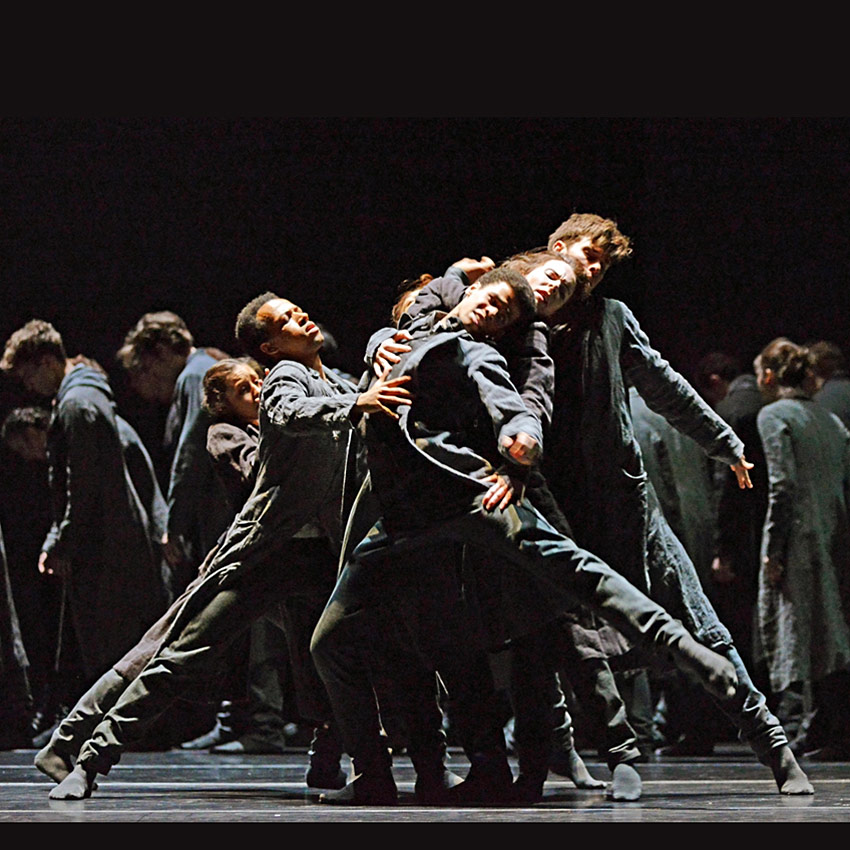
© Dave Morgan, courtesy the Royal Opera House. (Click image for larger version)
Hostile descriptions of the arrival of migrants use terms such as ‘influx’ or ‘ flood’ – imagery to which Pite refers in the wave-like surges of her corps of 36. Her choice of ’flight’ for her title implies both fleeing from danger and seeking freedom by migrating in groups. When her flock raise their arms above their backs, they resemble the wings of seabirds, skimming above the roiling motions of the lower halves of their bodies.
In the first section, they seem driven by a sense of purpose, sweeping across the stage in formations of stacked lines, their curved backs and shoulders urgent with distress. Even when one amongst them falls, the others forge onwards until they splinter into groups – families, couples, a pair of brothers, individuals remembering who they were and are, as they shed their anonymous overcoats. Perhaps they have reached a temporary rest station, where they can use their coats as pillows or blankets.
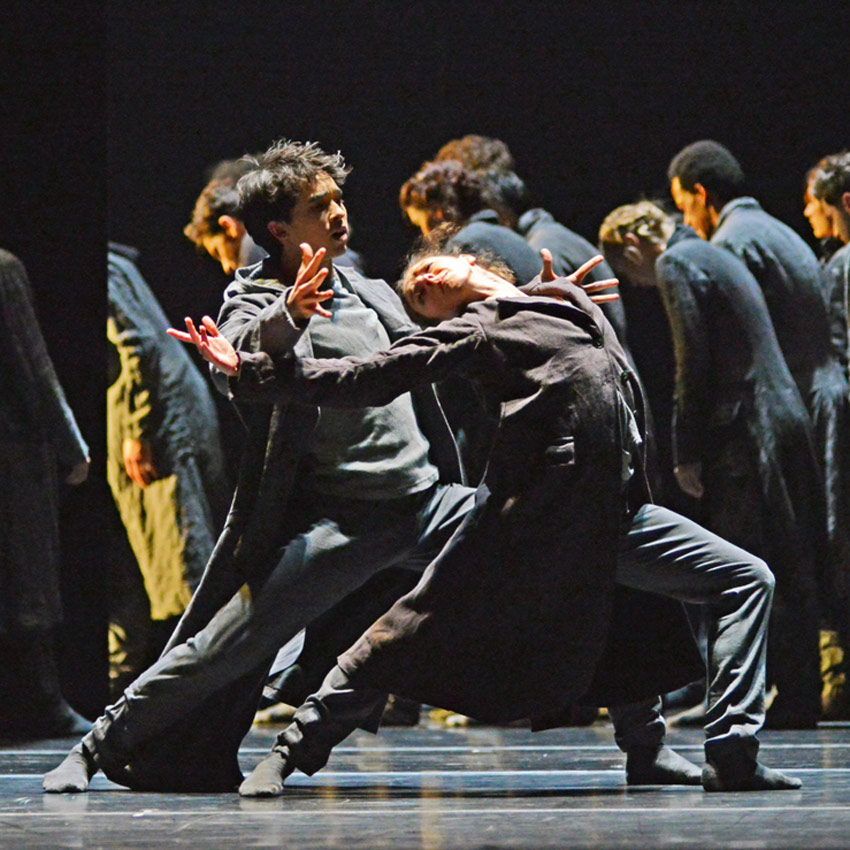
© Dave Morgan, courtesy the Royal Opera House. (Click image for larger version)
When the build-up of strings in the orchestra abates, and a soprano voice takes over, Kirsten McNally is revealed, clutching a coat across her forearms as though it were the corpse of a child. The song is a 15th century lamentation – Mary mourning the death of her son Jesus. Marcelino Sambé tries to console the stricken woman, holding her in anguished lifts until she collapses. More and more coats have been piled on her arms, burdening her with the weight of so many deaths.
In the final section, the community of refugees come together, their pulsing, interwoven movement reflecting the rhythmical counterpoint of the music. String instruments drop out of the orchestration one by one. Snow begins to fall, lighting up the background like night stars. Instead of a threat, the snow could be a benison of hope, or a deception. The migrants line up, passing through a doorway framed by the contracting set. As they do so, they fling up their arms: freedom at last – or a gas chamber instead of a shower of water? Two figures are left behind: McNally rocking back and forth and Sambé trying to tear himself apart in grief and rage. His silent howls are an abrupt, ambivalent cut-off to the work. Much of it, in spite of the subject matter, has been beautifully composed: mass formations are fascinating in expert hands. Sambé’s eruption of emotion must be the futile protest of a survivor who cannot believe that the refugees’ flight has been worth the sacrifice it has entailed.
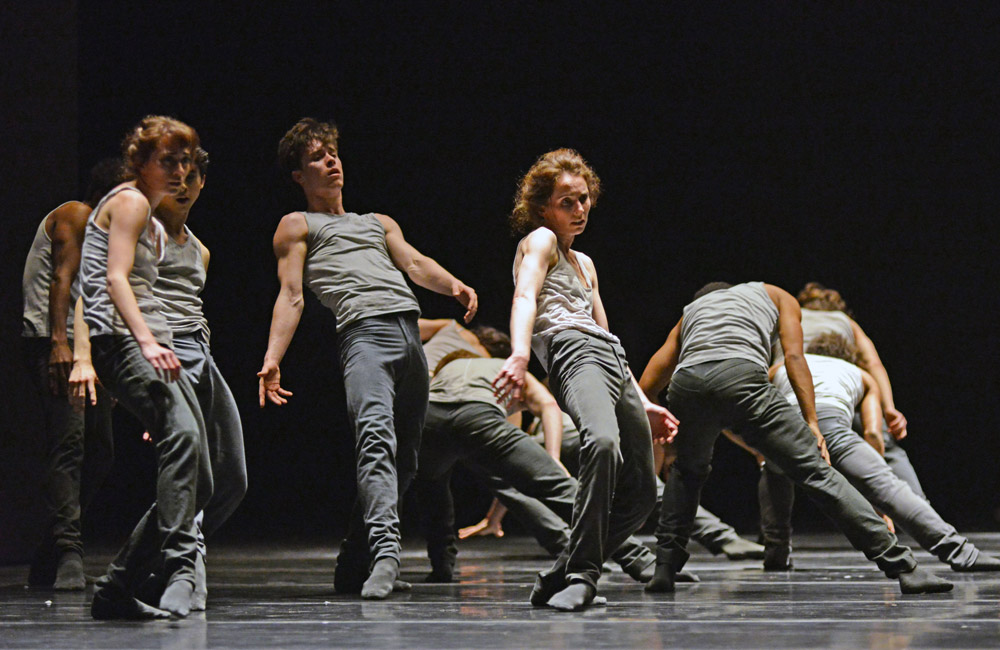
© Dave Morgan, courtesy the Royal Opera House. (Click image for larger version)
There can be no easy resolution to the humanitarian crisis, as Pite is well aware. Her audiences’ empathy with the plight she depicts on the Opera House stage is unlikely to have much effect on the migration of desperate peoples. But, like Gorecki, she has created a memorable and moving work full of meaning, which is more than can be said of the other two works in the Royal Ballet’s latest triple bill.
Christopher Wheeldon has appropriated of Arvo Part’s soulful musings for his brief, two-part ballet After the Rain. The pas de deux, to Spiegel am Spiegel’s bell-like tinklings for piano and violin, has so little to do with the sextet that precedes it (to Tabulate Rasa) that it’s often given as a gala number. As danced by Marienela Nunez and Thiago Soares in the opening night cast, the tender regret they convey overcomes (just) its resemblance to a shampoo advertisement.

© Dave Morgan, courtesy the Royal Opera House. (Click image for larger version)
Wheeldon’s use of ice-skating lifts and slides in the sextet is similar to David Dawson’s in The Human Seasons (2013). The two ballets are best not selected back-to-back on the same programme. Dawson has a predeliction for partnership manipulations in which the woman is used as a mop to sweep the stage. In one daring lift, Sambé, Sarah Lamb’s partner, holds her by one knee as her chest grazes the ground (a frontal version of skating’s ‘death spiral’, in which the woman’s head is inches off the ice). Only the dancers’ skill disguises the reality that many of the lifts are tortuously ungainly as well as perilous – as are the skids on pointe, should a shoe get caught. In skating competitions, such manouevres win points for daring athleticism. In ballet, such lifts have no emotional meaning as encounters between men and women.
Although the title of The Human Seasons refers to Keats’s sonnet of the same name, the choreography doesn’t distinguish clearly between the spring of youth and the phases of maturity through to the winter of mortality. It becomes relentlessly busy, covering a lot of ground with flying leaps, running in circles and dashings on and off stage. Principal and soloist dancers – Lamb, Nunez, Sambé, Vadim Muntagirov and Federico Bonelli, look good in speedy solos signifying nothing more than their physical ability. Claire Calvert endures being manhandled by a six-strong male ensemble who won’t put her down. In due course, the arrival of winter toward the end brings solemnity, calming Nunez and Bonelli into walking instead of running. The ballet ends as it began, with the women raised high above the men’s heads – a Présages lift, resembling angels in flight.
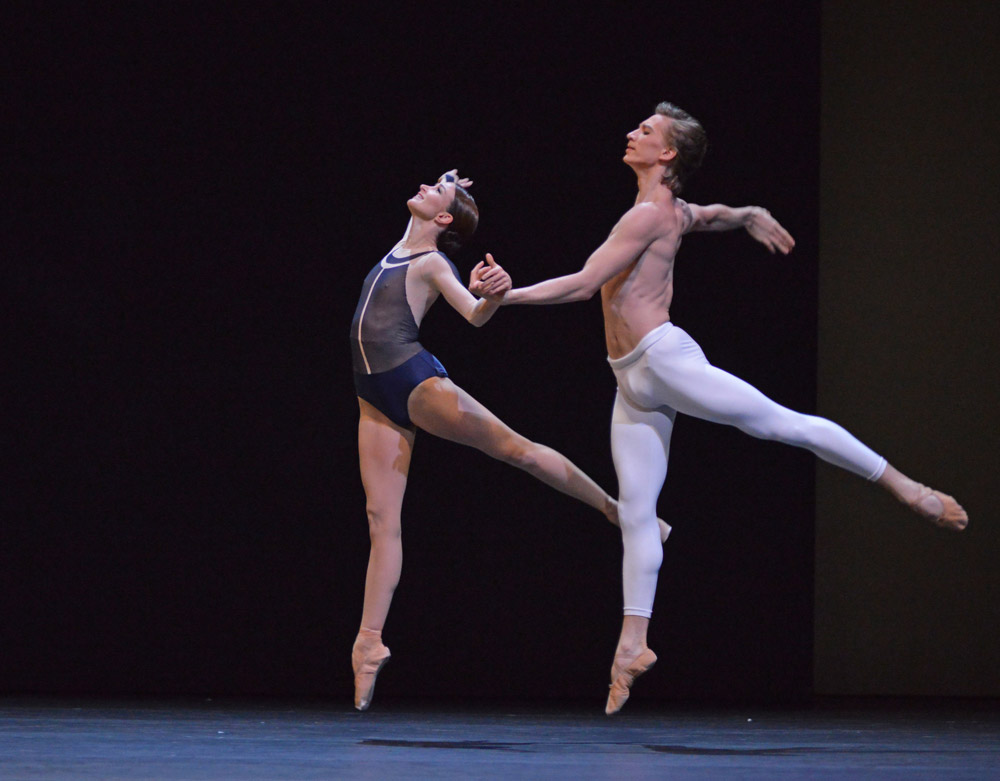
© Dave Morgan, courtesy the Royal Opera House. (Click image for larger version)
If the names of the three choreographers for this mixed bill had not been credited, would spectators have been able to tell who were male or female? All three have successful careers, creating works for many international companies. Much has been made in publicity and reviews of Pite being the first woman to have choreographed for the main stage of the Royal Opera House for over 18 years. Surely, what matters is not the sex of the creator but whether the work is valuable. Flight Pattern is.












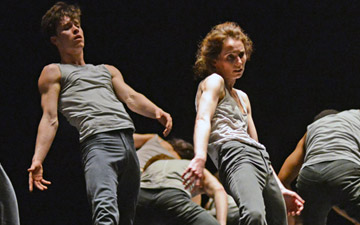
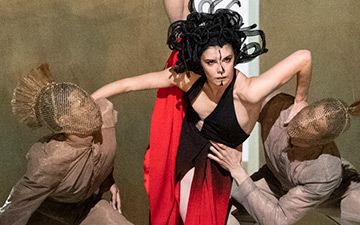
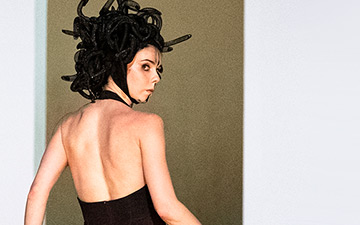

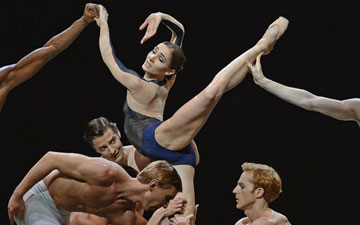
You must be logged in to post a comment.